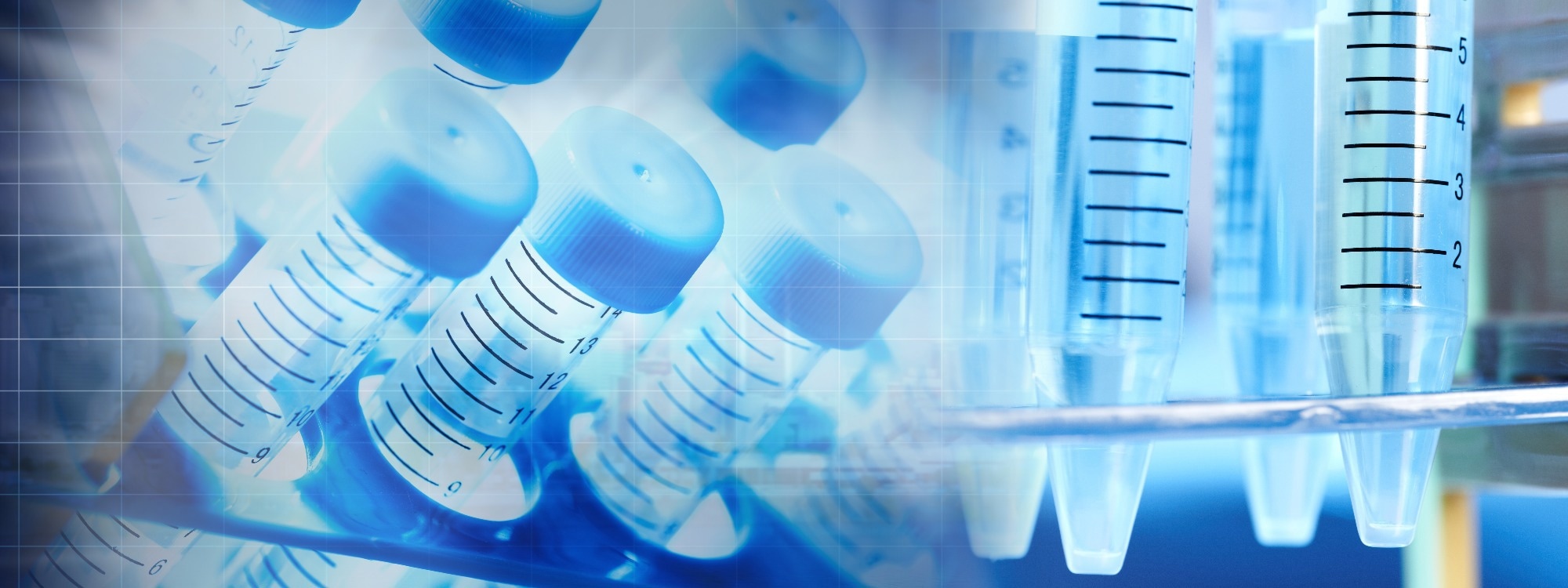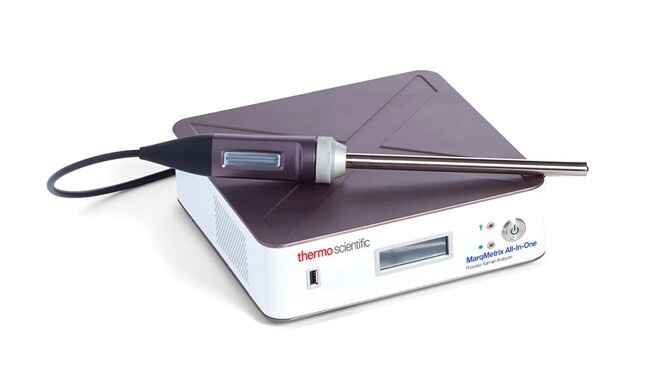Process analytical technology (PAT), a quality assurance program for the pharmaceutical industry developed by the US Food and Drug Administration, enables pharmaceutical manufacturers to control critical process parameters (CPPs).
When manufacturers need to ensure content consistency across products, such as moisture and structure, it makes sense to ensure the manufacturing equipment is also performing and operating consistently. Therefore, the primary objective of PAT is to ensure the delivery of consistent products with close, dynamic control over CPPs and CQAs (critical quality attributes) to compensate for variability in raw materials and equipment while reducing waste and costs.
In this interview, News-Medical Life Sciences speaks to experts at Thermo Fisher Scientific to discuss process analytical technologies and monitoring inline R&D biopharma processes with their latest process analyzer, Thermo Scientific™ MarqMetrix™ All-In-One Process Analyzer.
Could you please introduce yourselves and give us a brief overview of what role/work involves at Thermo Fisher Scientific?
We work with the Thermo Scientific™ MarqMetrix™ All-In-One Process Raman Analyzer which makes process monitoring and optimization accessible, practical, and profitable.
Our goal has always been to keep technology and instrumentation easy to set up and use, and retain robustness and field survivability to make our solutions more effective than current or historic testing methodologies.
Our products empower and enable you to make rapid, trusted analytical and business decisions. We believe the MarqMetrix All-In-One analyzer enables real-world cost savings when using process Raman spectroscopy to help you achieve your process analytical technology (PAT) strategic goals within the biopharma space.
What is process analytical technology (PAT), and how is it best implemented?
Process analytical technology covers a compelling area for us as an organization. It allows us to deliver clutch workflow solutions within the biopharma space.
Using PAT opens up a world of insight into a given bioprocess, and it provides the means to tackle problems as early as possible for faster, more efficient resolution.
PAT is not a new concept. Most larger companies are leveraging PAT solutions at some point or another in their pilot and manufacturing plants. We believe that there is no reason why smaller, mid-sized biopharma companies cannot also leverage similar solutions.
PAT can be used in several manners, such as off-line or out-line analysis, which requires sampling, and some automated analysis instead of manual wet chemistry. PATs may also be used as on-line and in-line systems where the need to sample is eliminated.
PAT is important for this industry. It matters greatly when challenged with tightening a process for FDA approval, when there is a strong need to beat out the competition in the market with rapidly developed therapies, or even when your goal is to implement practical process improvements and ensure product yields and costs are kept under tight control.
We are well aware of some of the challenges faced by those in the biopharma field when implementing PAT solutions. The end user needs to harness data for improved process understanding and control in real-time. However, this is difficult when you need to take time to sample for off-line analysis and risk potential contamination. It is even more frustrating when there are struggles with getting a newly acquired PAT solution implemented in your flow. Users also need to be quickly and properly trained.

Image Credit:Shutterstock/Billionphotos
What is the value of having process analytical technologies (PATs) available?
There is a clear value in having a PAT solution, particularly one that can give you real-time actionable results while minimizing or eliminating contamination hazards. The real question is why should you care that your data is available in real-time? Just ask yourself, how much time is wasted when something goes wrong?
It is extremely important to get things right the first time. Anytime you have to repeat work is considered waste. How much money do you stand to lose because you did not have the right data to make a quick decision? It can be extremely difficult to recover when trust is compromised, especially with how rapidly information can travel and be shared in the modern era.
How can Thermo Fisher Scientific’s technology help monitor in-line R&D biopharma processes?
Our process analytical technology leverages Raman spectroscopy to see real-time changes. We speak with our customers directly and understand the urgent need to monitor in-line R&D biopharma processes, both upstream and downstream.
When a customer is equipped with a PAT solution that enables a rapid knowledge infusion about any given process, it is then possible to closely control that process and boost the capacity of the existing development team in ways other than just headcount increases.
Our customers can make those critical pivots when they have real-time access to actionable data. Our team at Thermo Fisher Scientific is equipped to provide expert assistance with implementing these PAT solutions.

Image Credit/Shutterstock/ Stuioformfrei
What current PAT solutions is Thermo Fisher Scientific offering?
We have developed the MarqMetrix All-In-One Process Raman Analyzer, a small, extremely portable, robust Raman spectrometer.
Raman spectroscopy uses laser light to generate spectral data that may be interpreted to determine target and light concentrations and identities. It is non-destructive and very specific when performing qualitative analyses. The presence of water has a negligible impact, which is ideal for aqueous matrices.
Using an immersion probe and a fiber optic cable, the MarqMetrix All-In-One analyzer can provide in-situ bioprocesses measurements. A range of accessories is also available, such as a flow cell, if non-invasive analysis is preferred.
Our extensive Raman portfolio includes the MarqMetrix All-In-One Process Analyzer, Thermo Scientific™ DXR3 Raman Flex system, and our handheld Thermo Scientific™ TruScan™ RM Handheld Raman analyzer.
How and why is the new MarqMetrix All-In-One Process Raman Analyzer useful?
The MarqMetrix All-In-One analyzer is both small and not over-engineered, while the system is very intuitive as the user interface reduces the complexity of analysis and setup.
Within 15 minutes of setup, the analyzer generates real-time actionable data for critical process parameters right out of the box. The MarqMetrix All-In-One analyzer also enables better decision-making that impacts the bottom line by transmitting information within seconds or minutes rather than hours or even days, which is common when using legacy techniques.
The MarqMetrix All-In-One analyzer system is useful for obtaining rapid answers to key questions relative to bioprocessing applications where time to results is critical. For instance, potential application uses include metabolite analyte monitoring, such as looking at glucose lactate levels for upstream applications, and protein product purification in downstream processes. A couple of other applications include target product concentrations and cell density measurements. These are all applications where you must get the correct result quickly.
The MarqMetrix All-In-One Process Raman Analyzer allows users to collect and analyze spectra within seconds and tightens up process control parameters quickly.

Image Credit:Shutterstock/ kurhan
What quality of data can users expect when using the MarqMetrix All-In-One Process Raman Analyzer?
Our applications team performed a basic linear check with respect to integration times on a glucose cell culture media. The team wanted to know the sweet spot for integration to ensure a real-world sample acquisition in under five minutes. However, 15 seconds is all it takes to collect actionable spectral data and generate spectral analysis and concentration values of interest.
The MarqMetrix All-In-One analyzer can detect glucose in media matrices as low as 0.5 milligrams per milliliter with increasing peak intensity as that concentration increases.
Does implementing a PAT solution, such as the MarqMetrix All-In-One Process Raman Analyzer, positively impact manufacturing processes?
Yes, it does. For example, we recently had one real-world use case of the analyzer compared to a legacy automated off-line analyzer. This study was performed over four working weeks and examined the cost of upstream batch monitoring of a mammalian cell line. Using the MarqMetrix All-In-One analyzer, critical process parameters such as glucose, pH, gas analysis, and cell viability, were all monitored using a single system.
This approach facilitates rapid real-time eye-in-the-sky monitoring of bioprocesses with real positive outcomes. Cost-wise, we are talking about $80,000 (USD) in savings annually for glucose alone. That compounds into $300,000 (USD) in annual savings when using other critical process parameter tests that are eliminated because you are using the MarqMetrix All-In-One analyzer.
Armed with this knowledge, decisions on how to best optimize R&D headcount and instrument resources, including the resultant waste of those resources, can be easily made, particularly when performing process improvements.
Leveraging the unique nature of the MarqMetrix All-In-One Process Raman Analyzer as a small, easy-to-use, and accessible Raman PAT system creates a compelling business case. Thermo Fisher Scientific can also be leveraged as a trusted supplier and resource for assistance.
Could you provide an overview of the type of performance and application utility users can expect from MarqMetrix All-In-One™ Process Analyzer?
Sure. The MarqMetrix All-In-One analyzer can be used for various application in biopharmaceuticals including for upstream and downstream processes, such as the purification of proteins and nucleic acids, or even for identification and characterization of finished products.
There are challenges when monitoring and running conventional processes in a bioreactor. Bioreactors are used extensively throughout the biopharmaceutical industry, for example, during the manufacturing of monoclonal antibodies (mABs), and the MarqMetrix All-In-One analyzer can help overcome some of these challenges.
What are the main challenges when monitoring and running a bioreactor?
The process of monitoring a bioreactor requires someone to specifically pull the samples and then run it to off-line or out-line measurements. This involves resources and time. There are critical challenges with this process. For instance, there may be a fluctuation of metabolites. The metabolites can then vary dramatically in a bioreactor, or a bioreactor might sometimes go in the suboptimum of operating conditions, which may ultimately lead to a lower quality product.
Another challenge encountered when running a conventional bioreactor is contamination. When pulling a sample, the aseptic bioreactor is in contact with environmental factors and increases the risk of contamination. At Thermo Fisher Scientific, we tend to come up with solutions for these problems based on Raman technology, which is where the MarqMetrix All-In-One Process Raman Analyzer comes in.
Could you explain how the MarqMetrix All-In-One analyzer addresses these challenges directly?
We recently ran two different 5-liter bioreactors. The MarqMetrix All-In-One Process Raman Analyzer was integrated into the bioreactors for continuous monitoring. We took samples as would usually be carried out in a conventional bioreactor to measure the reference instruments.
A single model built using a cross-validation method was then used to predict the spectrum collected by the MarqMetrix All-In-One analyzer to get the predicted values.
We obtained three sets of data for glucose, glutamine, and glutamate. The predicted values from the MarqMetrix All-In-One analyzer, which are real-time prediction values, correlated well with the reference values. There was a close similarity between the reference measurements and the measurement produced by the MarqMetrix All-In-One analyzer. To give you a number, all of these had a correlation coefficient of nearly 95%, and some had a correlation coefficient around the 99th percentile.
How does the system process the data and ensure uninterrupted and consistent monitoring capabilities?
First, we have to look at the number of data points for controlling this technology. We have around 45 data points in a traditional system to control this bioreactor. With the MarqMetrix All-In-One analyzer and continuous monitoring, there are more than 9,000 points to monitor the reactions.
Imagine a scenario where something goes wrong between measurements. Traditionally, unless you manually perform an additional measurement, you would not know how much glucose to feed. Add to that scenario, the analyst cannot be there, or something happens so that an additional measurement cannot be taken.
The bioreactor creates sub-optimal conditions, which can lead to poor product quality. This problem can be easily tackled using a continuous monitoring process with the MarqMetrix All-In-One Process Raman Analyzer. It can even measure the viability of the cells in real-time, allowing decisions to be made instantly.
I would also like to point out the prediction error. I have already mentioned that we used a single model to predict between two different bioreactors in our case study. There was a close correlation between the predictions of two bioreactors, indicating that a single model can predict two different bioreactors.

Image Credit:Shutterstock/ BillionPhotos
How compatible is the MarqMetrix All-In-One Process Raman Analyzer with other systems or devices?
There is another obvious question here when talking about model transferability: can a model built on one instrument be transferred to many other instruments? Since we want to meet the needs of our biopharma customers, we worked to build a calibration model for monitoring a bioreactor which requires a lot of data.
We created a model to predict glucose, glutamine and lactate in our cell culture. It was free of bioreactive material, but it simulated the metabolites present in the bioreactor. We then created eight different validation set samples.
A different combination of glucose, glutamine, and lactate was prepared on eight samples. We then used 10 instruments to measure these samples. We acquired correlative data across the 10 different instruments, demonstrating that models are very transferable from one instrument to another, which again speaks toward the performance of the MarqMetrix All-In-One Process Raman Analyzer. The model transfer between units does not require any fancy calibration transfer. The model is built into one instrument and could be transferred to many other instruments.

Is there anything you would like to add or mention that may interest our readers?
With the ability to monitor multiple metabolites at once, the MarqMetrix All-In-One analyzer reduces the need for off-line analysis and helps optimize cell growth and end yields through automation.
The MarqMetrix All-In-One Process Raman Analyzer is an easy-to-use Raman instrument that provides opportunities to save and cut costs while improving R&D and production yields. It enables better, faster decision-making with a direct impact on your organization's bottom line.
As Thermo Fisher Scientific continues to expand the solutions it offers in the biopharmaceutical space, we strive to offer these critical technologies and services. We collaborate with other companies to develop and bring purpose-built applications and hardware to our customers.
About Thermo Fisher Scientific – Materials & Structural Analysis
 Thermo Fisher Materials and Structural Analysis products give you outstanding capabilities in materials science research and development. Driving innovation and productivity, their portfolio of scientific instruments enable the design, characterization and lab-to-production scale of materials used throughout industry.
Thermo Fisher Materials and Structural Analysis products give you outstanding capabilities in materials science research and development. Driving innovation and productivity, their portfolio of scientific instruments enable the design, characterization and lab-to-production scale of materials used throughout industry.
X-ray fluorescence spectrometers, FTIR spectrometers and X-ray photoelectron spectrometers enable researchers and material analysts to probe the chemical composition of materials ranging from ultra thin-films to bulk powders used in product development and materials troubleshooting. We offer a line of rheometry and viscometry instruments, as well as single- and twin-screw extruders, for laboratory benches that enable you to measure the physical property of semi-solids and liquids for shear flow and yield stress.
No other company offers the breadth of products and the depth of analytical capabilities for materials science and engineering.